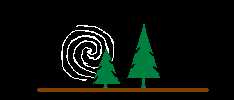I’ve experimented with using optics for the occultation later this afternoon, and am happy to present my findings for this do-it-yourself observing project for the astronomer at home. The hope is to see a bright star vanish and later reappear in broad daylight. This will not be a feat not of magic, but celestial mechanics. If one believes “Sky and Telescope” magazine, this fairly rare occurrence should be easy for all to see. In my experiments so far, I can only say, “Your mileage may vary,” but it sounds like a fun and worthwhile hunt!
MOON OCCULTS ALDEBARAN:
Bright stars (and also bright planets) can be visible through telescopes during the day, if only one knows where to look. Today, before the Sun sets, Aldebaran, the brightest star in Taurus, will skim close to the Moon as 6:52pm approaches. Find the Moon, and you’ll have found Aldebaran. The question will only be whether your optics happen to make Aldebaran visible through the daylight, or whether it will remain hidden, despite being in the eyepiece. If you see Aldebaran, it will touch the Moon and then vanish spontaneously at 6:52pm, when the Moon suddenly blocks its view as seen from Maine.
ALDEBARAN REAPPEARS:
The Moon has two “limbs,” the bright crescent, but also the less heralded “dark limb,” the side of the Moon shadowed from the Sun. When a star vanishes behind the dark limb, the effect is especially dramatic, because it is not, at that moment, potentially lost in glare, as Aldebaran shall be when it reappears at 7:52pm. Still, if one sees the reappearance, a star is born! How cool is that?
TIMES FOR TODAY’S OCCULTATION:
The times for today’s occultation of Aldebaran by the Moon, as reported by SkySafari Pro:
• 6:52pm, Aldebaran vanishes behind the Moon’s dark limb
• 7:52pm, Aldebaran reappears from behind the Moon’s bright limb
EQUIPMENT NEEDED:
At night, naked eyes would suffice, and binoculars would be an improvement. During the daytime, I wish I could say. I suspect a telescope will be needed to see Aldebaran at all, because it would both brighten the star and darken the background. Use whatever you have.
At 2:15pm, hours early, with the Sun high in the sky, I attempted to find Aldebaran, but failed. It was not visible to the naked eye, nor in 8×40 or 12×50 binoculars. It was further from the Moon than it shall be later, so I was uncertain whether my telescope could not reveal it, or perhaps I simply never found it. I do not know what the effects of the setting Sun shall be, so Aldebaran may or may not be easier to see as the time for the occultation approaches.
CAVEATS:
Although SkySafari Pro predicts times with remarkable accuracy, be at the eyepiece early, to be sure not to miss an event that occurs literally in the blink of an eye. Furthermore, times vary with geographic location, and Maine is big. In Boston, for example, everything happens at least one minute earlier.
Stay at the eyepiece for the reappearance, which may be several minutes later than 7:52pm. That is the time given by SkySafari, yet “Sky and Telescope” predicts 7:56pm for Boston, Massachusetts, which corresponds to perhaps 7:55pm for us in Maine. Better to be early and have to wait, than to miss it!
This is, regrettably, not an event favoring shared optics. Try to find a binocular or telescope for everyone in your party. Again, this is the nature of a blink-of-an-eye event. Only those at the eyepiece at the moment of occurrence will see it.
Scout the Moon at least an hour early, to be sure that it will be in view during the occultation. If, for example, there are tall trees in your Western sky, you may have to find another observing site.
FURTHER READING:
Crescent Moon To Cover Aldebaran in Blue Sky
By: Alan MacRobert | April 5, 2016
http://www.skyandtelescope.com/astronomy-news/observing-news/crescent-moon-to-occult-aldebaran/
SOFTWARE:
SkySafari is an astonishingly great program, but there are others. Stellarium is freeware available for virtually every desktop operating system.
http://www.skysafariastronomy.com/
http://www.stellarium.org/






